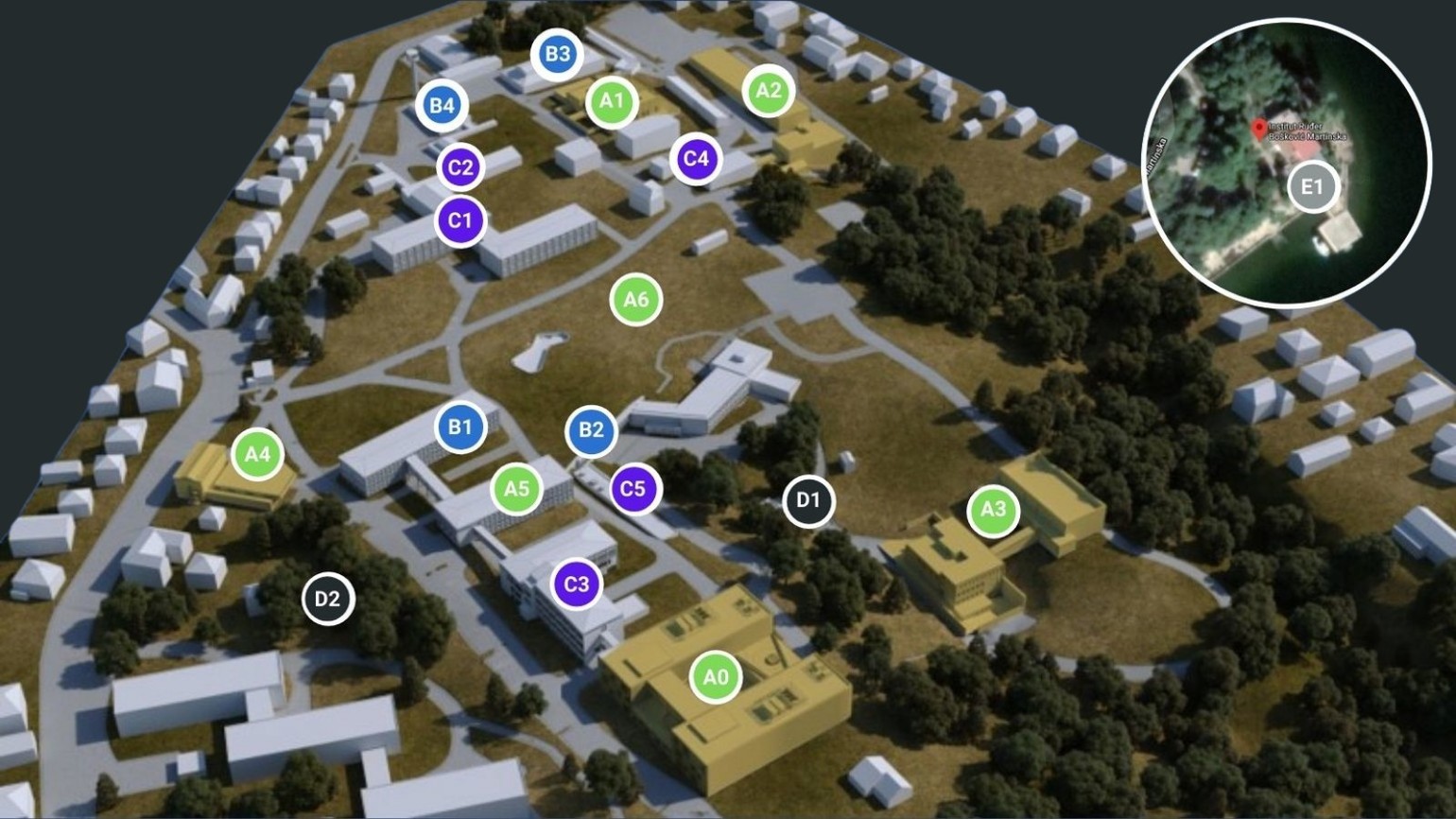
The aim of the spatial reorganisation is to bring together activities and scientists with similar work methodology and scientific equipment.
The existing spatial organisation of the Institute is characterised by a large dispersion of scientists and equipment, which impairs the functionality and efficiency of the work. The aim of the spatial reorganisation is to unite activities and scientists with similar working methodology and scientific equipment.
For each platform, the construction of a new facility or the expansion/reconstruction of an existing facility is planned.
| A0 | Wing Va | A0 is a facility that will be built on the site of Biology Facilities 1 and 2 for the needs of scientists in the fields of chemistry and molecular medicine. Work on these facilities will continue in 2024. We then expect the reconstruction of the boiler room, which will be a step towards a more modern heating system. This will not only lead to more efficient space heating, but will also help protect the environment. Our institute will thus take an important step towards a more sustainable future. |
| A1 | ICST building | Facility A1 will serve the needs of computer science researchers. Work is underway, the foundations and first floor have been laid, and the reinforced concrete walls and ground floor ceiling are currently being constructed. We envision A1 as a space for collaboration between different disciplines and competences to create new solutions for the challenges of the future. Our vision is clear: we want to build bridges between scientists, innovators and enthusiasts and promote the exchange of ideas and innovations in the field of information and communication sciences and technologies, from the development of information systems and services in the computing cloud to data analytics and artificial intelligence and HPC computing. |
| A2 | Wing X | |
| A3 | NAL | A3 is the hall that will house the new accelerator, and in this context the neutron generator building is also being rebuilt. The work began in May 2023. The surface has been excavated and the foundations are being laid. The new infrastructure and the conditions provided by Hall A3 will enable our scientists to conduct research and expand their knowledge in various fields. From the synthesis and production of materials to the development of advanced analytical techniques for the characterisation of materials, photonics and new devices, and radiation technology. |
| A4 | Administrativne building | |
| A5 | Wing IV | |
| A6 | environment | Construction work under the A6- ENVIRONMENT part is underway on a number of key elements. These include interventions in basic infrastructure, such as optimising the heating system, water supply, drainage, and electricity supply. Roads and car parks will be adapted to the works to create the best possible conditions for performance and work. In addition to the above interventions, special attention will be directed towards landscaping to create an environment that encourages creativity and inspiration. So far, the route of the new road to the A3 building has been constructed, the site has been prepared for new parking spaces and the infrastructure for water supply, sewerage and electricity has been created near the buildings under construction. |
| B1 | Wing III | |
| B2 | Cyclotron | |
| B3 | Workshop | |
| B4 | Boiler room | |
| C1 | Wing I, II, interpolation | |
| C2 | Workshop, NMR, dormitorium | |
| C3 | Wing V | |
| C4 | Wing VI and Wing VII | |
| C5 | cyclotron I, II, radiobiology | |
| D1, D2 | PSRM, substations | |
| E1 | Martinska | Construction work on the Martinska Research Station began in December last year and is successfully completed now. The goal of the renovation of the Martinska Research Station was to strengthen the capacity, sustainable development and management of the Adriatic karst coastal area in accordance with national legislation and legislation harmonised with EU directives. The works for the reconstruction of the building focused on the functional reconfiguration of the space inside the building for the needs of the laboratory and the improvement of the essential conditions within the existing dimensions. These are conditions such as mechanical strength and stability, fire safety, hygiene, health and environment, and energy management and heat conservation. The Martinska Research Station has not only received a new look, but also improved its internal capacities to enable even more successful research. We are currently waiting for a technical inspection so that we can move in and place the equipment. |


